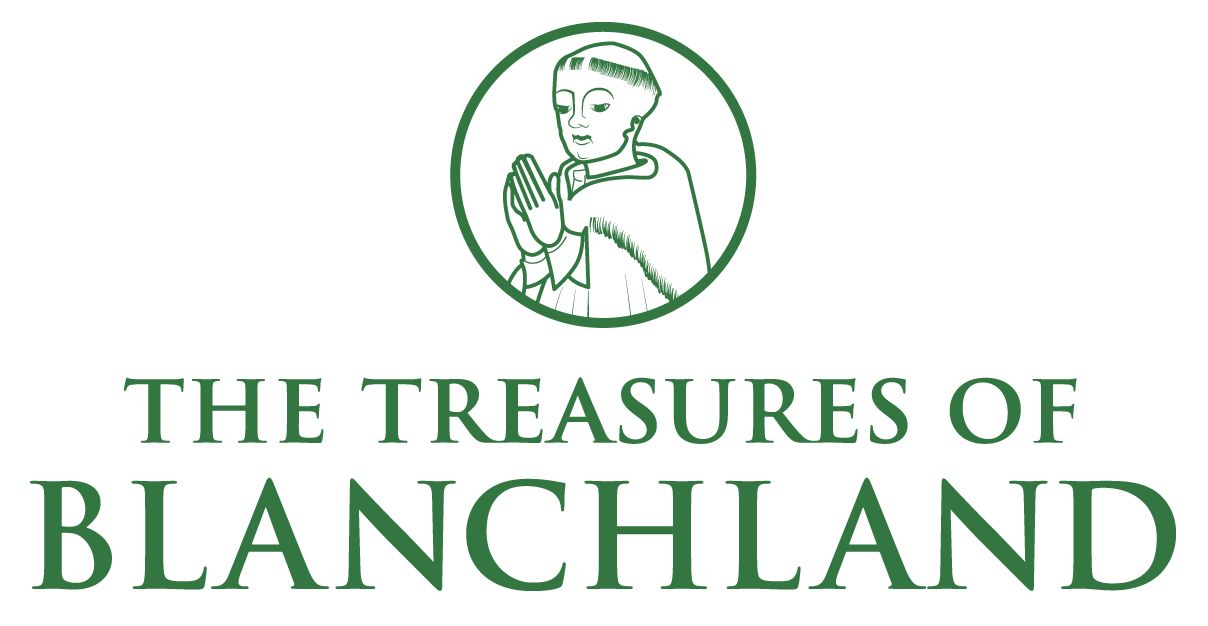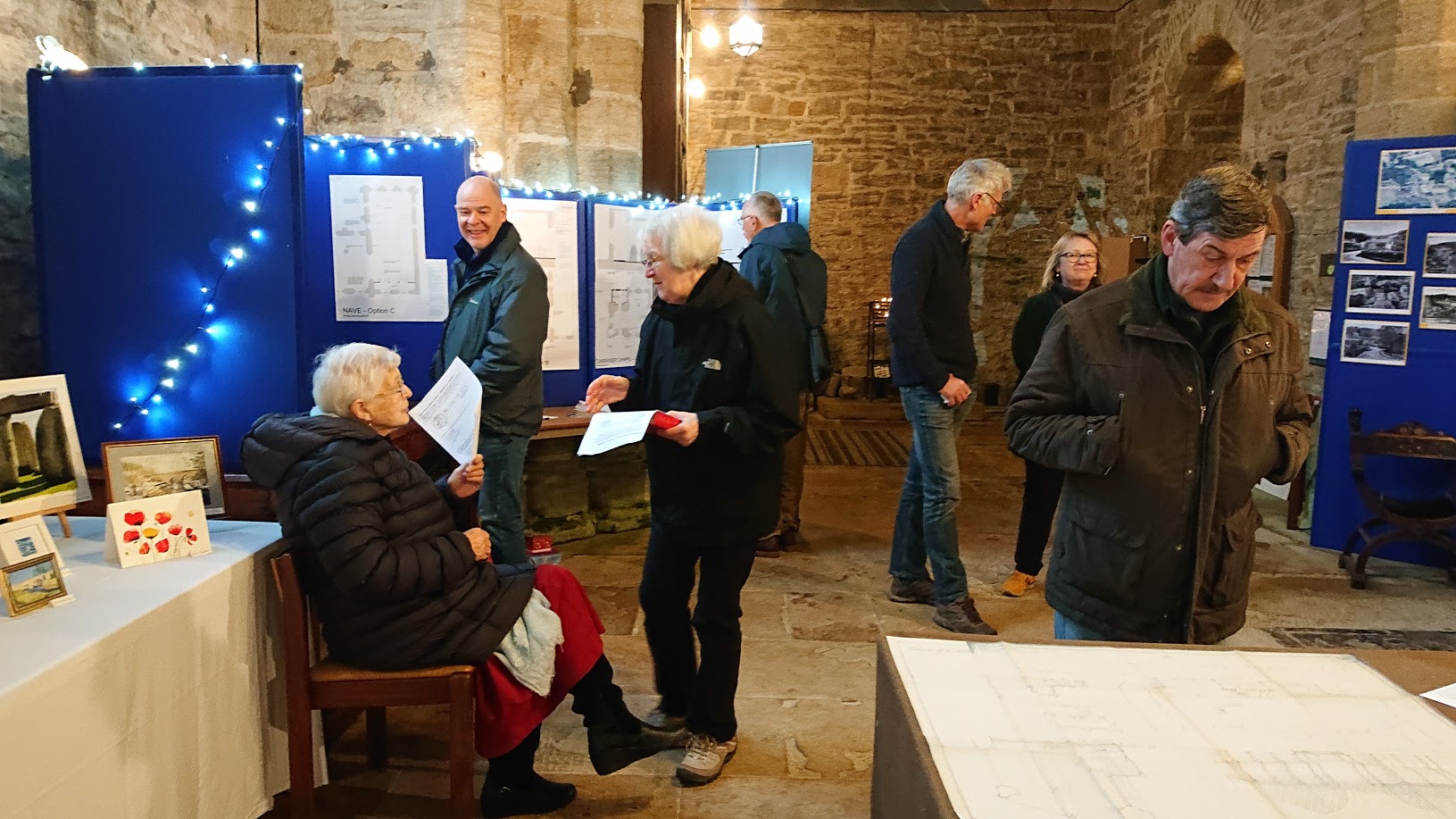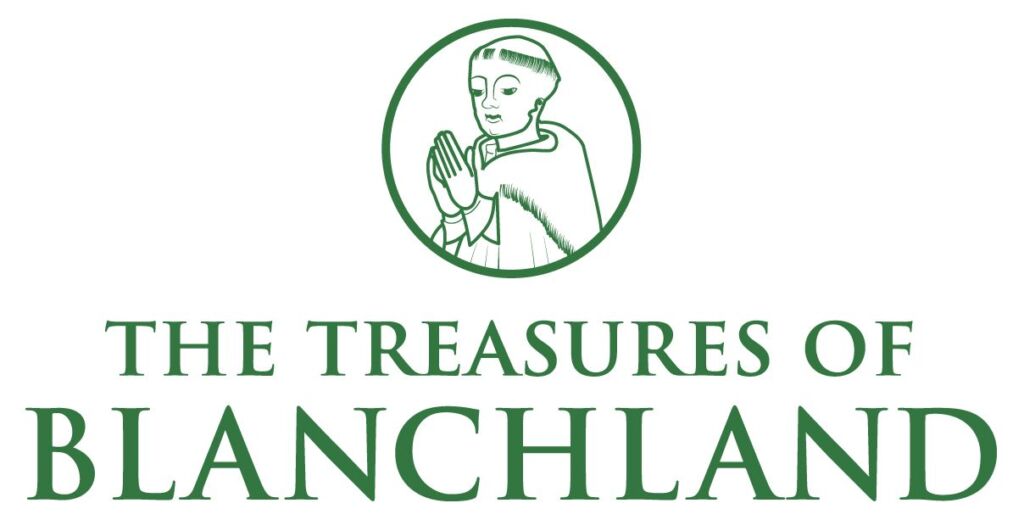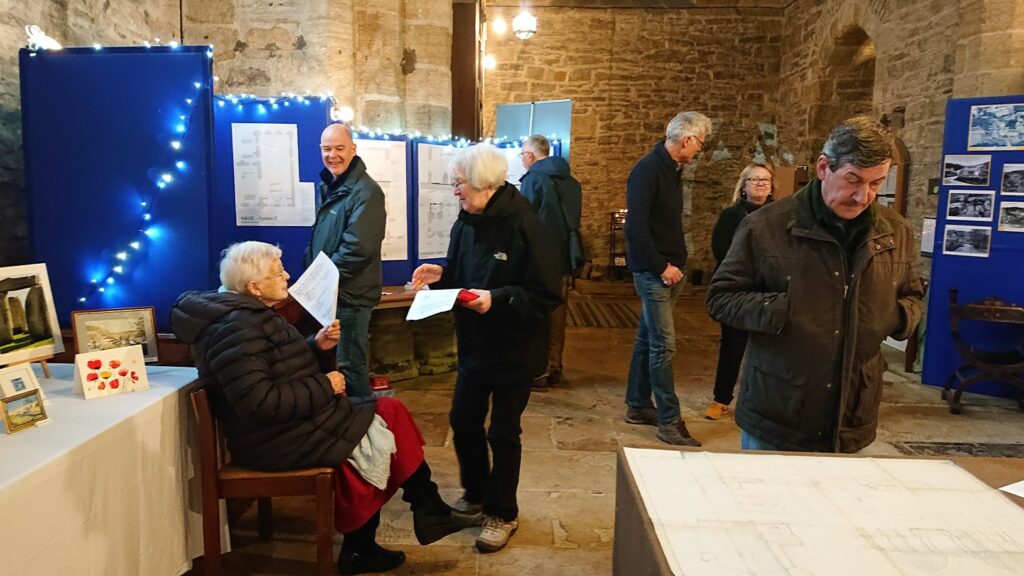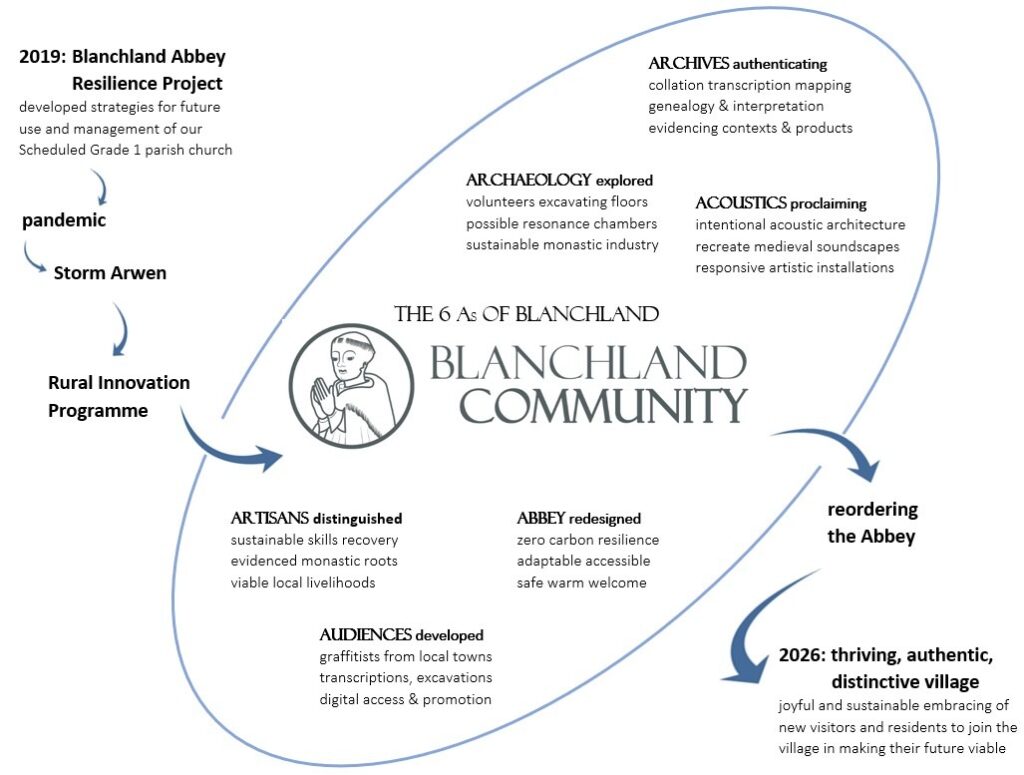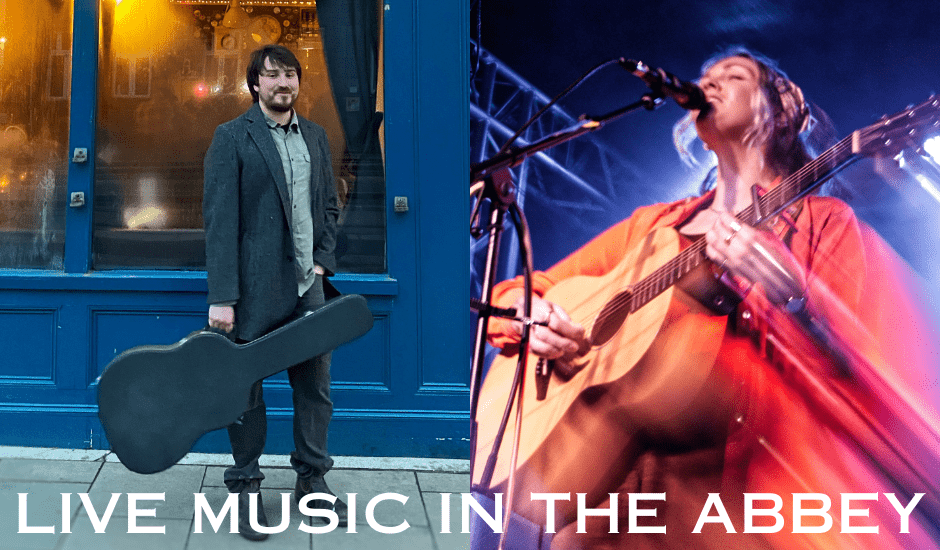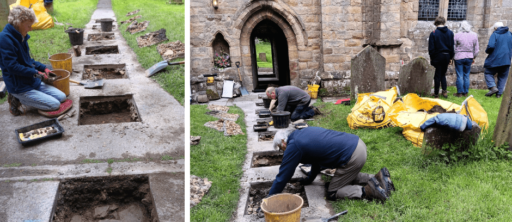Currently in progress:
The Treasures of Blanchland Project
The Blanchland Abbey Project began with the aim of developing strategic plans for the future use and management of the Grade 1 listed Parish Church, within its context as a residential community and unique monastic footprint village.
For updates about events in the Abbey, opportunities to take part, and news about what’s happening, please sign up to the project newsletter:
The Treasures of Blanchland is a partnership between Lord Crewe’s Charity and Blanchland with Hunstanworth PCC. The first two phases of the project were led by the partnership of the PCC of Blanchland and the Blanchland Community Development Organisation (BCDO).
The BAP identified needs from visitors and residents alike, for improving, understanding and interpretation of the village heritage (ancient and modern). A common question from visitors to the local Tea Room and Hotel is “It’s beautiful here, but what is it?”
We knew that we had to address the problems of no disabled access into the Abbey, the cold and damp conditions that didn’t allow for our visitors to linger too long within its walls, and we had to develop a plan for the Abbey’s long-term sustainable future.
We began by working out a list of Project activities encompassing researching historic documents, geophysical resistivity survey, architectural feasibility planning, governance training and audience development activities.
Phase 1: Resilient Heritage Project With funding in place from the National Lottery, and Newcastle Diocese DAC approval, we achieved, along with the incredible support of a Project Manager, Phase 1 of the Project. During this time-period we covered 5 elements intended to take the project through to the next phase:
- Archaeological investigations. A geophysical survey by Durham University was undertaken to reconnoitre areas of the scheduled monument and listed building that could be affected by the architectural proposals which included new heating and a small facilities extension. We planned 4 test pits to investigate the subfloor levels within and adjacent to the church building. These would identify, record and conserve the remains of what are thought to be the foundations of an earlier church and in particular features that were suspected to include resonance chambers and medieval graves. The excavations, recording and reporting would be undertaken using community archaeology methodologies under commissioned expert supervision. See attached survey report.
- Acoustic investigations. Learning from the work of the cathedralacoustics.com project, and in collaboration with the School of Arts and Cultures research at Newcastle University’s Culture Lab, we hoped to capture the existing acoustic footprint of the building prior to our planned interventions. We would then use these sound recordings to measure the effects of exposing the suspected resonance chamber through the archaeological excavations.
- Archival research. Building on the work instigated during the early days of the Project, volunteers from the community would continue to research, assemble and replicate historical material pertaining to the Abbey and the Parish for use in heritage interpretation, genealogical research and visitor enquiries.
- Audience development and community engagement. A programme of community activities, training (including archaeological excavation, finds processing and recording, surveying and heritage maintenance) and public performances would be developed in partnership with local and invited artists. A comprehensive on-line presence would be developed and maintained through digital content.
- Future planning. The architectural proposals determined during the early days of the Project, will be modified to make the most of the findings from the archaeological and acoustic investigations. Working with the Lord Crewe Arms hotel and other local businesses will develop the heritage elements of tourism, alongside increased social activities and business opportunities to local people which will maximise the distinctiveness of Blanchland. Heralding the year of phase 1 we held an “Abbey Alive” day which can be viewed here
We completed phase 1 of the project just as the Covid Pandemic hit and we ground to a halt with only the transcribing of the Archival Parish records keeping the “flame burning” and our www.facebook.com/Blanchland page which helped the local community during the pandemic, providing a central communication hub.
Phase 2: The 6A’s Project
The 6A’s Project of Blanchland is a formative research project that builds on 5years of community-led activity. Its aim is to maintain and increase the range of people actively involved in the heritage of Blanchland by:
Abbey: the re-working of the architect plans post investigation, accessibility improvements and the designing of an acoustically and aesthetically distinctive venue for events and audio recording. See plans attached.
Archaeology: Carry out the planned 4 excavation pits and evaluate and record findings. https://www.blanchland.org/blanchland-abbey-project/6as-of-blanchland/archaeology/
Acoustics: Work with experts to create a 4D sound model of the Abbey, manipulating it to best position performances and recreate medieval soundscape.
Archives: Local volunteers research, assemble and replicate historical material for architectural context, visitor interpretation, genealogy and authenticity.
Artisans: Explore the sustainable recovery of skills evidenced here since monastic era and work with The Lord Crewe Charity to enable locally owned and operated craft, food, retail, accommodation and events businesses to benefit from the Project events and heritage.
Audiences: support local volunteers and enterprises to develop and deliver research activities and public events. Help them to create authentic offers, attractive and accessible to local people and tourists, in partnership with local accommodation providers, including the prestigious Lord Crewe Arms Hotel. Improve online presence with new e-commerce website and digital content including artefacts, archives, artworks and event recordings.
Identify the descendants of people who pencilled their names on the organ case and record and interpret the graffiti. Visit: https://www.blanchland.org/blanchland-abbey-project/6as-of-blanchland/graffiti/
During this second phase of the project we discovered, after a visit from the York Glaziers Trust, that three stained glass panels set into the South and East windows of the Abbey are of high National significance. As such it was decided to remove these panels (one had already been removed from the south window 2years previously for conservation) and the panels to receive cleaning and conservation work, whilst the PCC and Project members decided where we would display the pieces within the fabric of the church. This would become part of the Project’s phase 3. Please access the York Glaziers trust report on these pieces here: https://www.blanchland.org/blanchland-abbey-project/6as-of-blanchland/medieval-stained-glass/
Phase 3: The Treasures of Blanchland Project
In Spring 2025 we applied for the 3rd funding from the National Lottery Heritage Fund to complete the plan for the long -term sustainability of the Abbey. By adding the improvements of heating and small facilities inside the Abbey it is hoped that we can create a heritage and exhibition space where visitors and the community can access visual and digital information on the historical heritage that is Blanchland.
